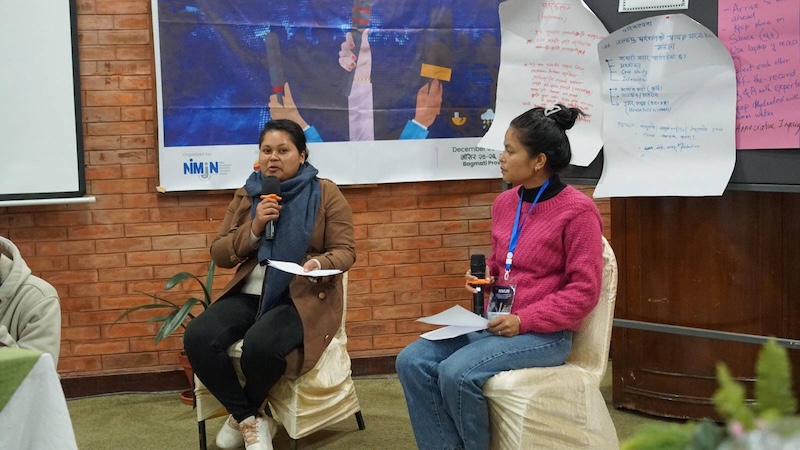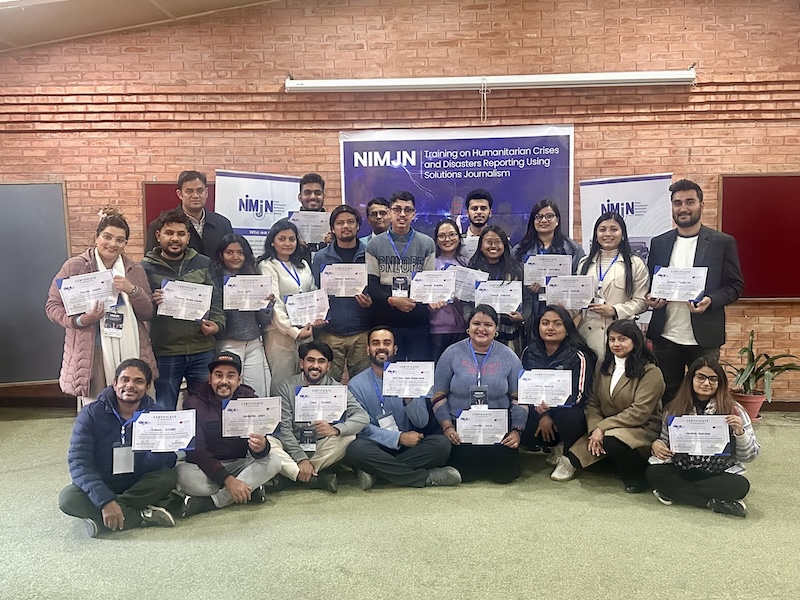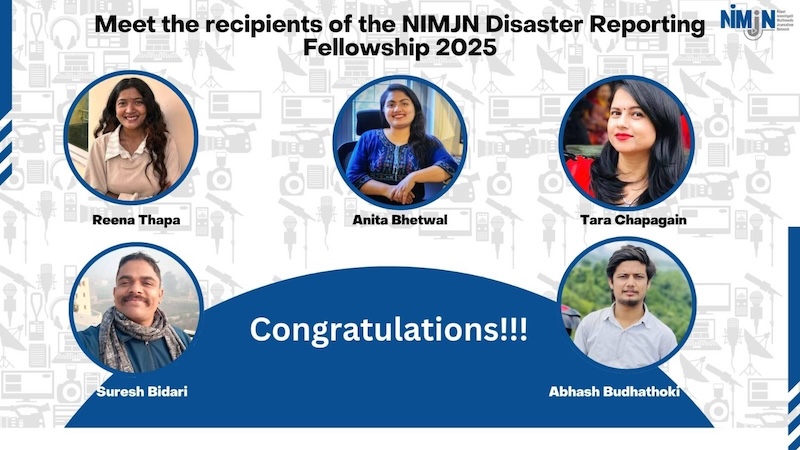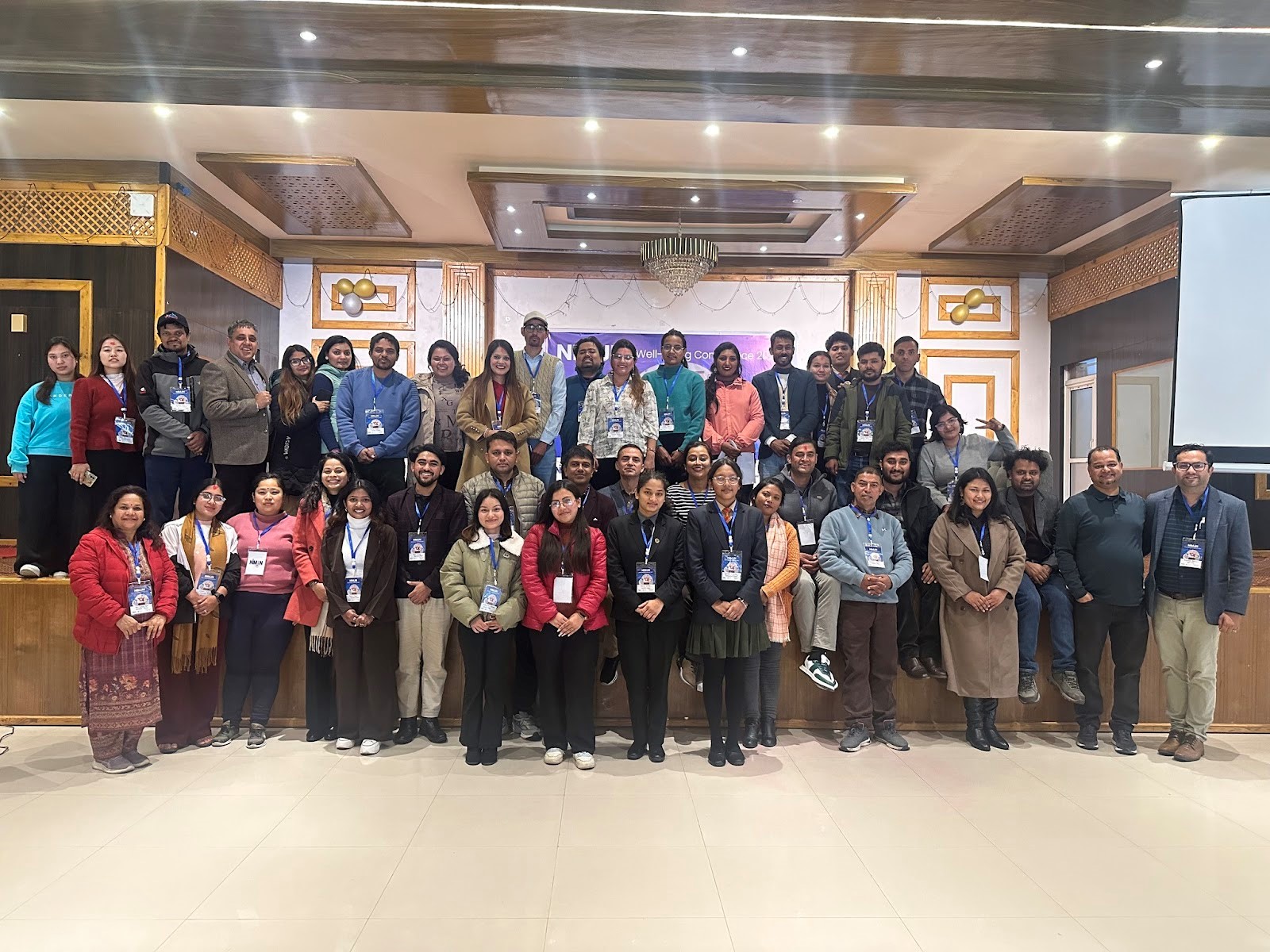Nepal Investigative Multimedia Journalism Network (NIMJN) trained 25 journalists from disaster-affected districts of Bagmati, Gandaki, and Madhesh Province on ‘Humanitarian Crises and Disasters Reporting Using Solutions Journalism’ in Godawari, Lalitpur from December 9 to December 11, 2024. This three-day residential training provided journalists with the latest technical, practical, and theoretical reporting skills on reporting disasters and crises. The training was supported by Humanity United.
The three-day residential training consisted of sessions ranging in topics from introduction to investigative reporting to solutions reporting, understanding humanitarian crises and disasters in Nepal to reporting on climate-induced disasters, generating hypotheses to safety and ethics of journalists, multimedia reporting to data-storytelling, experience sharing by NIMJN fellows on disaster reporting stories to maintaining mental well-being as a journalist while disaster reporting.
NIMJN's Chief Editor, Rajneesh Bhandari, led the sessions on investigative reporting, solutions journalism, multimedia storytelling, and mobile journalism. He showed the best examples of reporting with photos, video, graphics, and data.
Meen Bahadur Paudyal Chettri, Ph.D., from the Nepal Centre for Disaster Management, led the session on the theory and practice of disaster management, types of disasters, recent trends, disaster risks in Nepal, and practical tips for journalists covering the disaster.
Similarly, Prabin Man Singh, Director of the Prakriti Resource Centre, led the session on understanding climate change and climate-induced disaster in Nepal. His session covered climate science, climate impacts, climate solutions (adaptation and mitigation), climate negotiations, politics, and diplomacy.
In the mental health session, Pravin Tiwari, co-founder of Kalpabrikshya Health Foundation, discussed mental well-being and how journalists can manage stress while reporting humanitarian crises and disasters. He shared that according to the Dart Center for Journalism and Trauma, 4% to 59% of media professionals experience PTSD. He recommended psychosocial first aid, which involves the approach of Look, Listen, and Link as an effective way to address psychosocial problems.

NIMJN fellows Bhagirathi Pandit and Ruma Rijal shared their experiences, including the challenges and lessons learned in producing in-depth and investigative stories related to disasters. They highlighted that reporting on disaster and humanitarian crises is sensitive and challenging but the satisfaction of covering these crucial stories makes it worthwhile. They also emphasized the need for journalists to care for their emotional and mental health. Additionally, Bhagirathi and Ruma shared the NIMJN process of story production from pitching story ideas to the production and publishing stages.
Senior journalist Dinesh Regmi led sessions on disaster, displacement, and migration; safety for journalists, and ethics in journalism.
Sunita Chaudhary from NIMJN emphasized that women, children, and elderly people are often the most affected and vulnerable in such scenarios. She highlighted the importance of being mindful of intersectionality in disaster reporting.
Journalist Suphal Kafle, a copy editor at NIMJN, led a session on gathering story ideas, generating hypotheses, and managing investigations.
The participants visited Tika Bhairav, a disaster-affected area, at the Godavari Municipality-6 in Lalitpur, where they interacted with the ward chairperson and locals and observed the scenario of loss and damage resulting from flood and landslide in late September 2024. Following the field visit, they shared their experiences and prepared multimedia content that was later reviewed.
The training included interactive group work where the participants built their story ideas based on four pillars of solutions journalism - response, evidence, insights, and limitation, a hypothesis, and discussed how they could be realistically pursued. They also made a one-minute video each using mobile journalism and multimedia storytelling skills they learned during the training.
Excerpts from participants regarding their training experience:
“I have gathered journalism experience, but this is my first training experience. After attending NIMJN's capacity-building training on humanitarian crises and disaster reporting, I now understand the concepts of humanitarian crises and disasters along with climate-induced disasters and how these issues can be covered more evidently. Moreover, I realized how crucial it is to use multimedia tools and create a hypothesis with a proper pitching format so that we, as journalists, can disseminate the information in a holistic way. Also, the mental well-being and safety of journalists while reporting are not prioritized, but in this training, we got to know about its significance and learnt some tips to maintain mental well-being and ensure safety by conducting risk assessment while disaster reporting. Overall, this training helped me to become updated”- Laxmi Balayar, Participant (Translated from Nepali to English)
“This training has provided a platform to connect with a network of journalists ranging from early-career to seasoned journalists, where we discussed the challenges we faced in the Nepali media landscape and the way forward. The learnings gained from this training on using multimedia tools while reporting and tips to maintain mental well-being are valuable for us while covering disaster-related stories. We hope NIMJN will conduct more capacity-building training for journalists and provide larger space for collaborations and fellowships in upcoming days.”- Subhadra Dhital, Participant (Translated from Nepali to English)

Fellowships Awarded
Five journalists are awarded fellowships to report disasters and crises using solutions journalism. They were selected based on their story pitches and ideas among qualified applicants. Under this fellowship, they will be working on producing investigative multimedia stories on disasters and crises using solutions journalism. NIMJN will be providing them with all the necessary mentorship and support for this. We wish them all the best moving forward with the story production process.


